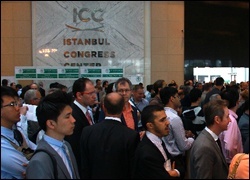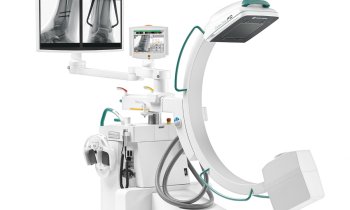International differences in total knee replacement
7,500 orthopaedic specialists gather in Istanbul
Countries vary considerably in the number of cases in which artificial knee joints are employed, according to researchers from the Medical University of Graz (Austria) reporting at the EFORT Congress in Istanbul.

“Not only does the rate of knee replacement per inhabitant vary from country to country, so too do the types of procedures,” said Dr Patrick Sadoghi (Graz University Hospital for Orthopaedics and Orthopaedic Surgery, Austria) summing up the data from an international comparison study at the 14th Congress of the European Federation of National Associations of Orthopaedics and Traumatology (EFORT) in Istanbul. About 7,500 experts are currently discussing the latest developments in their field.
As the largest joint in the human body, the knee is frequently affected by degenerative joint disease. In this painful condition, cartilage wear progresses due to wear associated with aging, misload of the joint, injuries or other causes and can no longer be repaired once non-surgical therapies are exhausted. When joint preservation measures fail, a knee replacement procedure has to be undertaken. The surgeon does a partial or total replacement of the joint surface depending on the findings. The service life of the implant is monitored in follow-up checks to detect when prostheses have to be changed, for example. National arthroplasty registers have been set up in many countries to ensure quality control and to determine how well an implant performs. The purpose of these registers is to collect data on implanted prostheses, e.g. make and model of the implant and bone cement, as well as follow-up procedures.
Surgery rates vary between 40 and 163 procedures per 100,000 inhabitants
For the evaluation presented in Istanbul, the researchers analysed data from eleven relevant national or regional registers, which provide sufficient information about the procedure and replacement rates of knee prostheses as well as the age of the patients. The comparison shows that the individual countries differ greatly in the number of first-time knee replacements undertaken per year. Dr Sadoghi, author of the study: “The rate varies between 40 and 163 procedures per 100,000 inhabitants, the average being 106.” Amongst the countries being compared, total knee replacement is undertaken most frequently in England, Denmark, Norway and Sweden in relative terms and least frequently in New Zealand, Australia and Canada.
There are also clear-cut fluctuations in the manner in which the prosthesis is fixed in place. The percentage of artificial knee joints fixed in place solely with cement is 90% in New Zealand, for example, and only 54% in Australia. There is even greater variation in the way in which the surface of kneecaps is replaced. In Denmark, 72% of all total knee replacement procedures involve replacement of the back side of the kneecap in which the cartilage in the knee cap is replaced. In Norway, this figure is just 2%.
Economy and demography as important factors
Scientists attribute these differences to national preconditions, amongst other factors. Dr Sadoghi explained: “On the one hand, health care systems are never identical and on the other hand, the insurance status of the people affected may have an impact, as might the fact that physicians show tendencies in treatment typical of their respective country.” The frequency of surgery is not an indicator of the quality of a health care system. After all, there is great medical leeway with knee osteoarthritis, allowing alternative treatment options to be utilised for a long time before an operation becomes unavoidable. Dr Sadoghi: “Endoprostheses are highly cost-intensive, so the use of this approach is ultimately a question of funding.”
Demography may also play a part in the large range of results. Dr Sadoghi: “Psychological strain varies from country to country, as does life expectancy and even the demands people place on their musculoskeletal system. The respective age distribution is another important factor. It can cause the additional financial burden to rise to such an extent that the indication for the surgical procedure is handled differently and quite a bit more restrictively if resources are scarce.”
About EFORT
The European Federation of National Associations of Orthopaedics and Traumatology (EFORT) is the umbrella organisation linking Europe´s national orthopaedic societies. EFORT was founded in 1991 in the Italian Marentino. Today it has 42 national member societies from 43 member countries and six associate scientific members.
EFORT is a non-profit organisation. The participating societies aim at promoting the exchange of scientific knowledge and experience in the prevention and treatment of diseases and injuries of the musculoskeletal system. EFORT organises European congresses, seminars, courses, forums and conferences. It also initiates and supports basic and clinical research.
Source: EFORT Abstract 3802: Epidemiology and surgical technique of total knee arthroplasty: a comparative analysis using worldwide knee arthroplasty registers.
06.06.2013






